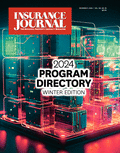The insurance industry has historically been slow to adopt new technologies – often relying on traditional outreach, marketing and client management methods. However, digital transformation has taken hold across the sector in recent years, radically reshaping how insurance companies engage with their audiences, manage marketing campaigns and drive growth. This shift isn’t just a trend; it’s necessary in a competitive marketplace where customer expectations are higher than ever.
As an insurance marketing expert, I’ve seen firsthand how wholesalers, carriers, retail brokers and insurtechs leverage digital marketing strategies, automation and data analytics to stay ahead. Let’s dive into this transformation’s core elements and how they create new opportunities across the insurance ecosystem.
The Power of Digital Marketing Strategies
Traditional marketing methods – direct mail, print ads and in-person events – still have their place, but digital tactics are increasingly supplementing them. Digital marketing can target specific audiences, track real-time engagement, and optimize campaigns for more significant ROI.
Content Marketing and SEO
The foundation of many successful digital marketing campaigns is content that resonates with target audiences. Å˽ðÁ«´«Ã½Ó³» companies are building thought leadership through educational blogs, webinars, white papers and podcasts. By addressing the pain points of their audiences, insurance professionals can position themselves as experts and problem-solvers.
Search engine optimization (SEO) is equally crucial. A solid online presence helps potential clients find insurance companies for specific services. Whether a wholesaler specializing in hard-to-place risks or an insurtech offering an innovative SaaS solution, optimizing content for search engines ensures it reaches the right people.
Social Media Engagement
Social media isn’t just for brand awareness – it’s a tool for direct engagement. Å˽ðÁ«´«Ã½Ó³» professionals are using social platforms to share insights, highlight services and build connections. With personalized targeting, paid social campaigns can reach specific segments, amplifying the message to relevant audiences.
Automation: Streamlining Marketing and Sales
Automation is one of the most transformative technologies in insurance marketing. With marketing automation tools, companies can streamline processes that once took hours or days, freeing up strategy and creative development time. The ability to automate workflows has had a massive impact on lead generation, client engagement and retention.
Lead Nurturing & CRM Integration
When integrated with marketing automation, customer relationship management (CRM) systems allow insurance companies to nurture leads in a personalized way. For example, if a retail broker shows interest in a particular line of coverage, automated follow-up emails with tailored content can keep them engaged without manual effort. These systems also track user interactions, enabling data-driven adjustments to marketing strategies.
Wholesalers and MGAs should be using CRM systems to monitor broker interactions and tailor outreach based on their needs. Automation helps insurance professionals manage communication across multiple channels, ensuring no lead is left behind. The efficiency gains are considerable, allowing smaller teams to execute large-scale campaigns.
Drip Campaigns and Behavioral Triggers
Automation also enhances email marketing through drip campaigns – sequences of pre-written emails sent to prospective clients at strategic intervals. Behavioral triggers, such as clicks or downloads, can adjust the content and timing of the next email, ensuring the message is always relevant. This nurturing is vital in the long sales cycles typical in commercial and specialty lines insurance.
Data Analytics: Driving Smarter Decisions
Digital transformation in marketing isn’t complete without the power of data analytics. Å˽ðÁ«´«Ã½Ó³» professionals can access vast amounts of data, from customer demographics and claims history to online behavior and social media interactions. Analyzing this data can inform marketing decisions, allowing companies to understand their audience better and refine their strategies.
Predictive Analytics for Personalized Marketing
Predictive analytics uses historical data and algorithms to forecast future customer behaviors. For example, by analyzing which policy types a broker typically places or which coverages a client renews year after year, insurance professionals can anticipate their needs and suggest tailored solutions. This level of personalization is now a key differentiator in marketing.
Real-Time Campaign Optimization
With digital marketing, real-time analytics allow for quick course corrections. If a particular social media ad or email campaign isn’t performing, companies can pivot immediately by adjusting messaging, targeting or creative assets. This level of agility wasn’t possible with traditional marketing methods, where results might take weeks or months to evaluate.
Data analytics empower insurance entities to measure ROI more accurately, comparing the effectiveness of different channels, messages and formats. For instance, a broker might find that webinars bring in more qualified leads than paid ads, leading them to allocate more resources to content production.
The Role of Insurtechs
Insurtechs are playing a critical role in accelerating digital transformation in insurance marketing. These companies are disrupting the underwriting and claims processes and offering new tools to help traditional players modernize their marketing efforts.
Insurtech platforms often have built-in marketing tools like automated email systems, data analytics dashboards and social media management solutions. By integrating these solutions with legacy systems, established carriers and brokers can benefit from the latest advancements without overhauling their infrastructure.
Conclusion: Embracing the Future of Å˽ðÁ«´«Ã½Ó³» Marketing
The digital transformation of insurance marketing is far from over. As technologies evolve, insurance companies will have even more powerful tools at their disposal. By adopting digital marketing strategies, leveraging automation, and utilizing data analytics, the insurance industry can connect with a broader audience, improve client engagement and drive sustained growth. Those who embrace these changes will be best positioned to thrive in the future – delivering value to their clients and entire organizations.
Topics Tech
Was this article valuable?
Here are more articles you may enjoy.



 CFPB Sues Walmart, Fintech for Illegally Opening Accounts
CFPB Sues Walmart, Fintech for Illegally Opening Accounts  Kentucky Supreme Court Overturns Escape Clause Meaning, Affirms Roof Collapse
Kentucky Supreme Court Overturns Escape Clause Meaning, Affirms Roof Collapse  Swiss Re’s Business Unit CEOs Share Views on Key Risk Themes of 2025
Swiss Re’s Business Unit CEOs Share Views on Key Risk Themes of 2025  NC Supreme Court Bucks Trend, Finds COVID Caused Physical Loss to Restaurants
NC Supreme Court Bucks Trend, Finds COVID Caused Physical Loss to Restaurants 


